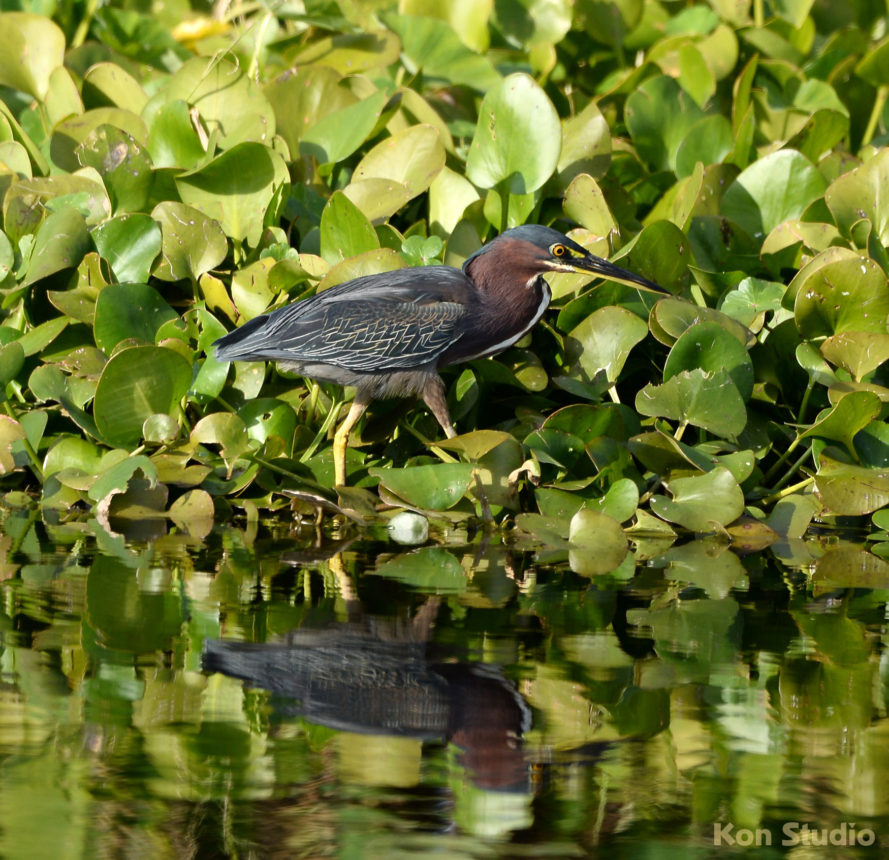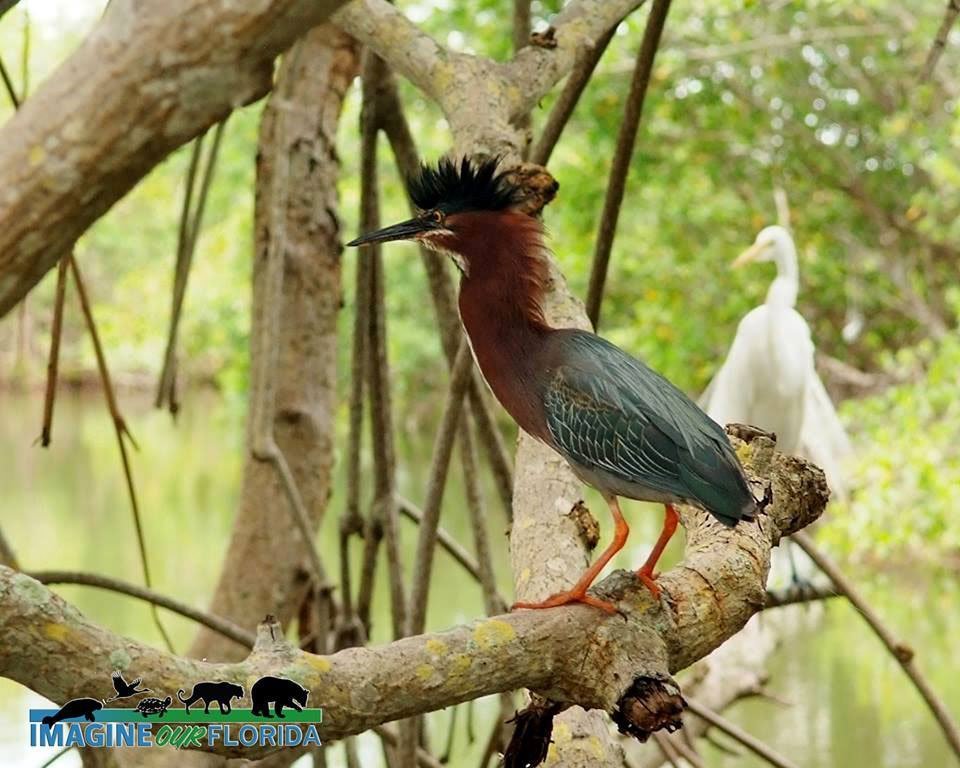The Green Heron (Butorides virescens) is a solitary, secretive bird. They inhabit coastal areas, mangrove swamps, freshwater ponds, and wetlands.
Green Herons stand with their bodies stretched and horizontal, ready to thrust their bill into prey. They use twigs, berries, and feathers as bait. They drop the bait into the water and wait for it to attract prey. Fish are the primary food, but they also eat aquatic frogs, crustaceans, insects, grasshoppers, snakes, and rodents.
Nests are constructed near water. The male begins building the nest, and the female finishes it. The female lays 3-5 eggs, and both Mom and Dad incubate the eggs for 19-21 days. Once hatched, both will feed the young with regurgitated food. The young learn to fly at about 23 days, but both parents will continue to feed the young until they fledge at about 30 days.
The Green Heron is a dark-colored, stocky bird. They have a dark neck, gray belly, and a greenish, blue back. The upper part of the bill is dark, and the legs are bright orange. Green Heron populations seem to be stable but accurate numbers are difficult because of its secretive nature.
For the Green Heron, the protection of wetlands is especially important.
Green Heron – St Petersburg Mangroves


